In Memoriam
Home » In Memoriam
They shall grow not old, as we that are left grow old. Age shall not weary them, nor the years condemn. At the going down of the sun and in the morning. We will remember them.
Memoriam
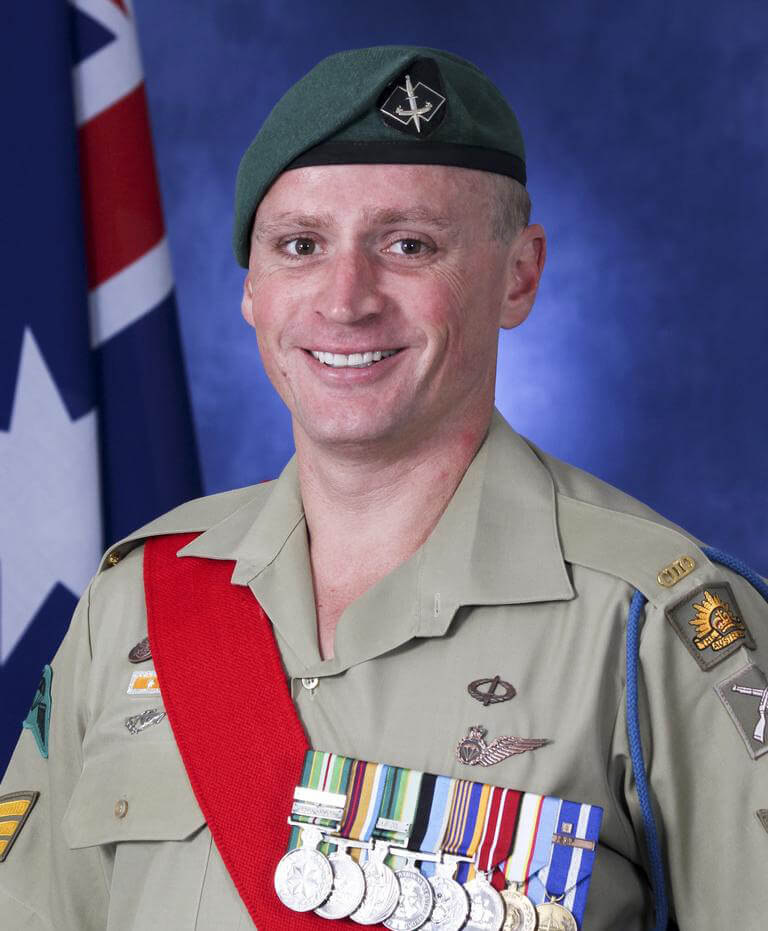
Sergeant Ian Turner
Sergeant Ian James Turner was born 3rd November 1981 in Sydney on the day “Just a Dash” won the Melbourne Cup. He was the youngest of five children and grew up in Launceston, Tasmania.
Ian joined the army at the age of 18 years. He was initially posted to 2 RAR where he was deployed to East Timor. Whilst in Timor he competed in a boxing competition against the Kiwis. He won his bout and used to enjoy spinning the yarn that he was an “undefeated international boxer’.
In 2003 Ian qualified as a Commando and during his time with 4RAR (which became 2 CDO) he acquired over 250 individual skills through completion of more than 160 courses and was capable with no fewer than 20 weapon systems.
Ian was formally recognised as an excellent soldier three times, best at military operations as a junior leader trainee in 2008, received a leadership award on his subject course for Sergeant in 2012 and had multiple commendations.
Whilst Ian performed well operationally his commitment to his military career extended to academics as well. He completed a Bachelor of Arts and whilst concurrently deployed on Commando Operations in Afghanistan and Iraq, he undertook a Master of Arts in Counter Terrorism.
Ian did seven deployments to Afghanistan and Iraq as a Commando. It was in the valleys of Afghanistan that Ian encountered some of the heaviest fighting experienced by the Australian forces.
In 2007 he was the scout on the team when Luke Worsley was killed in action and had to be stretchered for 7 hours over inhospitable terrain to get him home to his family. In 2009 as the team 2IC and medic he was the first responder for a team member who sustained horrific injuries from a vehicle explosion where amidst dust, carnage and gunfire he rendered emergency aid that saved his life. Then in 2013, Ian fought together with his best mate Cam Baird, who was killed in action.
In Iraq, Ian was instrumental in developing the Iraqi Special Counter Terrorist Forces tactics and procedures that have been praised as increasing their combat survival rate and effectiveness in the ongoing fight to liberate their country.
In 2014 Ian was formally diagnosed and treated for severe Combat PTSD. It was an invisible ailment that impacted every part of his life despite his best attempts to defeat it. On 15th July 2017 Ian succumbed to combat induced PTSD and took his own life.
Ian is survived by his dearly beloved daughter, extended family and friends who mourn his loss every day.
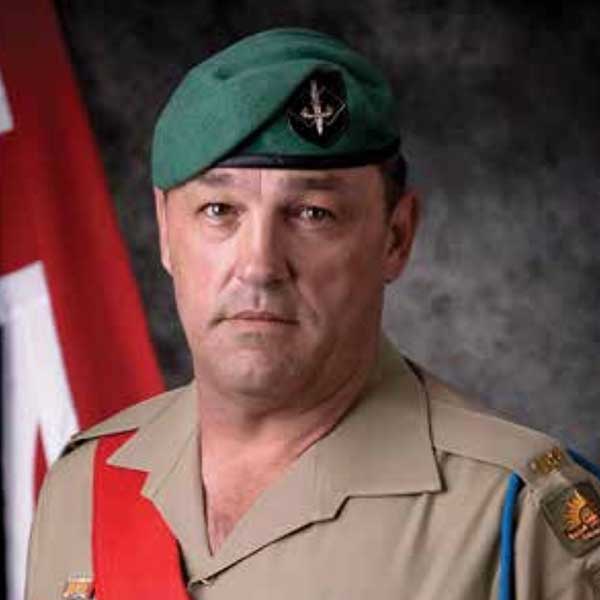
Sergeant Peter Cafe
Peter joined the army in 1987 and was posted to 3 RAR, where he spent his early years. He was discharged in 1995, re-enlisted in 2000 and then posted to C CDO Coy, 4 CDO. After completing his CDO reinforcement cycle, he was assigned to D Coy for deployment to East Timor in 2001.
In 2002 Peter was one of the founding members of TAG-E and spent many years as the MOE & Demolitions master within the unit. He was discharged again in late 2005 and began contracting in Iraq and Afghanistan. He re-enlisted in 2010 and was posted to CDO Trg Wng, SFTC and then to D CDO Coy, 2 CDO Regt in 2012, where he was deployed to Afghanistan in mid-2012 and Iraq in 2016.
Peter’s honours and awards include:
- AASM with Cambodia
- East Timor & ICAT Clasps
- Afghan Campaign Medal
- ASM with Cambodia & CT/SR Clasps,
- OSM – Middle East, DFLSM with 2 Clasps
- ADM, UNTAC & UNTAET Medals
- NATO Medal with ISAF Clasp,
- Infantry Combat Badge
- Returned from Active Service Badge
- Operational Service Badge
Sergeant Peter Cafe passed away on the 6th February 2017, leaving behind his wife, Gwen, and four children, Ashleigh, Thom, Emily and Lachlan.
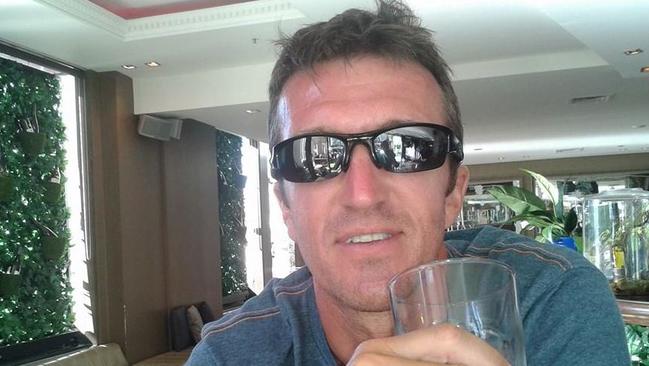
Sergeant Gary Frankie Francis
Sergeant Gary Francis, from the Sydney-based 2nd Commando Regiment, died during a training activity on Mount Cook in New Zealand on 16th July 2014.
The 44-year-old former Royal Marine was leading a group of 10 Commandos on a two-week Mountain and Cold Weather Operations (MACWO) exercise when he plunged 40 metres down a crevasse on the Grand Plateau.
Gary was leading his team on a crevasse rescue exercise at the time of his death. During the rescue exercise, the team would climb down into the crevasse and then use one member as the patient for the extraction exercise.
Normally the team would be roped together for the actual exercise, but Gary was surveying the crevasse for its suitability when the crust gave way and snow collapsed around him.
Another Commando, who is also a former Royal Marine, led the recovery of his mate’s body and the men administered first aid but sadly were unable to revive him.
Gary had been the ADF’s MACWO subject matter expert since January 2011, a year after joining 2nd Commando Regiment at Holsworthy.
The Englishman, originally from Welling in South East London, previously spent 13 years in the British military as a Royal Marine Commando Mountain Leader before moving to Australia in 2010.
Gary is survived by his wife and two children.

Lance Corporal Todd John Chidgey
Lance Corporal Todd Chidgey was serving with a Protective Security Detachment, which provided protection for a senior Australian officer at Headquarters International Security Assistance Force Joint Command.
Todd died in a non-combat-related incident in Afghanistan on 1st July 2014 and is survived by his mother, father, brothers and partner.
Aged 29 at the time of his death, Todd was born in Gosford, New South Wales, in 1985. He joined the Australian Army in March 2006 under the Special Forces Direct Recruiting Scheme.
On completion of his initial employment training, he was posted to the then 4th Battalion (Commando), The Royal Australian Regiment, now the 2nd Commando Regiment, in September 2006.
Todd was deployed on six tours to Afghanistan, ranging from two weeks to six months. Todd’s colleagues in the 2nd Commando Regiment describe him as a brilliant bloke to know and work with, who was loyal to the core and would do anything for his mates.
A consummate professional and a dedicated soldier, Todd was one of the hardest working members of the Regiment, who never sought recognition or reward.
Todd has received the following honours and awards:
- Australian Active Service Medal with Clasp International Coalition Against Terrorism Afghanistan Campaign Medal
- Australian Service Medal with Clasp Counter Terrorism/Special Recovery
- Australian Defence Medal
- NATO non-article 5 Medal with Clasp ISAF
- Multiple Tour Indicator 3 North Atlantic Treaty Organisation (NATO), International Security Assistance Force (ISAF)
- Soldiers Medallion
- Infantry Combat Badge
- Returned from Active Service Badge
During Todd’s service in the Australian Army, he was deployed on the following operations:
- Operation Slipper (Afghanistan) May – July 2014
- Operation Slipper (Afghanistan) March 2014
- Operation Slipper (Afghanistan) October – November 2013
- Operation Slipper (Afghanistan) July – December 2012
- Operation Slipper (Afghanistan) February – July 2010
- Operation Slipper (Afghanistan) June – November 2008
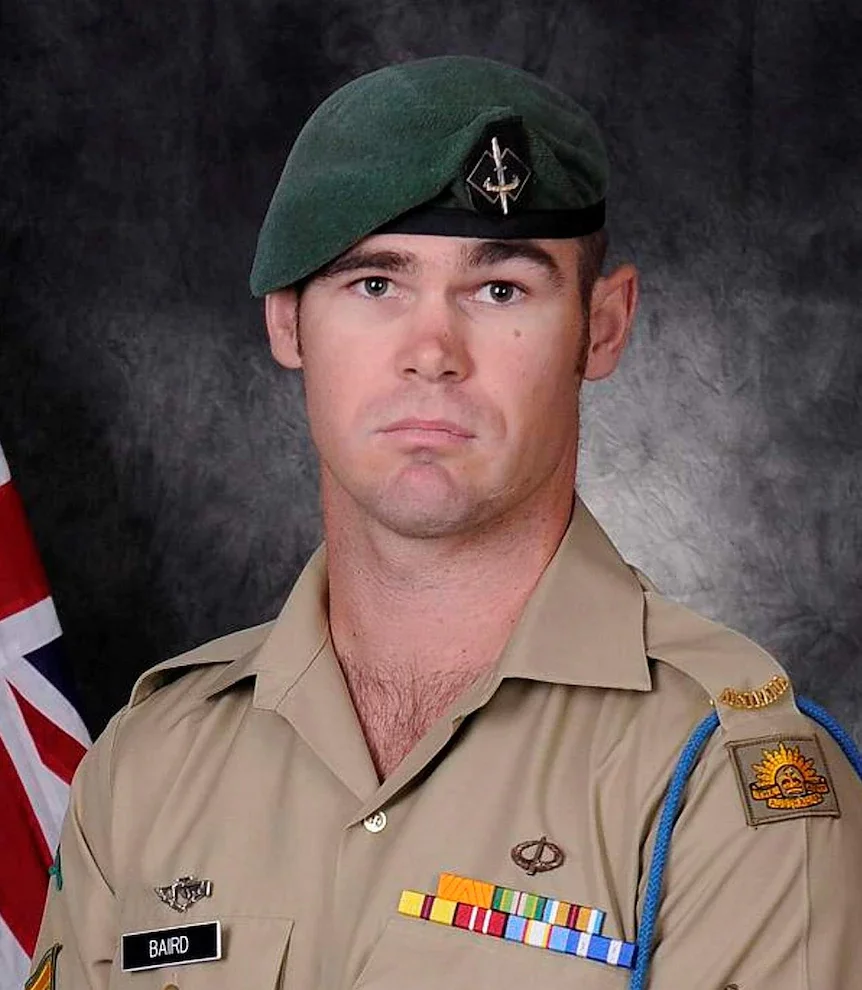
Corporal Cameron Stewart Baird VC MG
Corporal Cameron Stewart Baird, MG, was killed on operations in Afghanistan on 22nd June 2013.
Cameron was a member of the Special Operations Task Group and was from the 2nd Commando Regiment based at Holsworthy Barracks in Sydney, New South Wales.
Upon completing his initial employment training, he joined the Army in January 2000 and was posted to the then 4th Battalion (Commando), The Royal Australian Regiment, now the 2nd Commando Regiment, in February 2000.
Cameron was an outstanding Special Forces soldier. He exemplified what it meant to be a Commando, living by the attributes of uncompromising spirit and honour, which in turn earned him the unconditional respect of his fellow Commandos.
His leadership in action was exemplary, constantly inspiring those around him to achieve greater things. In addition, Cameron was an extremely dedicated and disciplined soldier, always striving for excellence in everything he did.
Cameron died how he lived at the front, giving it his all, without any indecision. He will forever be remembered by his mates and the soldiers he served with in the 2nd Commando Regiment.
Born in Burnie, Tasmania, in 1981, Cameron is survived by his parents, brother and partner.
Cameron has received the following honours and awards:
- Victoria Cross was awarded posthumously on 13th February 2014
- Medal for Gallantry
- Australian Active Service Medal with Clasp East Timor, Clasp Iraq 2003, Clasp International Coalition Against Terrorism
- Afghanistan Campaign Medal
- Iraq Campaign Medal
- Australian Service Medal with Clasp Counter Terrorism/Special Recovery
- Australian Defence Medal
- United Nations Medal with Ribbon
- United Nations Transitional Authority in East Timor
- NATO non-article 5 Medal with Clasp ISAF and Multiple Tour Indicator (3)
- Infantry Combat Badge
- Returned from Active Service Badge
During Cameron’s service in the Australian Army, he was deployed on the following operations:
- Operation Slipper (Afghanistan) February 2013 – June 2013
- Operation Slipper (Afghanistan) July 2011 – February 2012
- Operation Slipper (Afghanistan) March 2009 – July 2009
- Operation Slipper (Afghanistan) August 2007 – January 2008
- Operation Falconer (Iraq) March 2003 – May 2003
- Operation Bastille (Iraq) February 2003 – March 2003
- Operation Tanager (Timor-Leste) April 2001 – October 2001
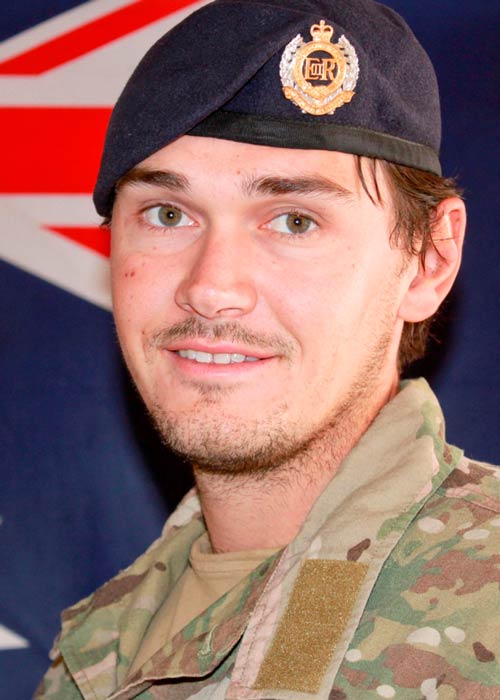
Corporal Scott James Smith
Corporal Scott Smith was killed in Afghanistan on 21st October 2012 whilst serving with the Special Operations Task Group when an improvised explosive device detonated during a mission in southern Afghanistan.
Scott was born in the Barossa Valley, South Australia, in 1988 and is survived by his partner Liv, parents Katrina Paterson and Murray Smith and sister Roxanne.
Scott was from the Special Operations Engineer Regiment based at Holsworthy Barracks in Sydney, New South Wales. He joined the Army in February 2006 and, upon completion of his initial employment training, was posted to the 1st Combat Engineer Regiment, Darwin.
In 2008, Scott was posted to the then Incident Response Regiment as a search operator.
Scott was an exceptional soldier who possessed all the qualities and charisma of a great junior leader. He was described by his CO as a genuine, honest and dedicated member who was one of the best Junior Non-Commissioned Officers that the unit has seen.
His loss has been deeply felt.
Scott has received the following honours and awards:
- Posthumously awarded the Commendation of Gallantry
- Australian Active Service Medal with Clasp International Coalition Against Terrorism
- Afghan Campaign Medal
- Australian Service Medal with Clasp Solomon Islands
- Australian Service Medal with Clasp Counter Terrorism/Special Recovery
- Australian Defence Medal
- NATO International Stabilisation Assistance Force Medal with Multi-Tour Indicator 2
- Army Soldiers Medallion
- Army Combat Badge
- Returned from Active Service Badge
During Scott’s service in the Australian Army, he was deployed on the following operations:
- Operation Slipper (Afghanistan) July 2012 – October 2012
- Operation Norwich (Australia) November 2011
- Operation Slipper (Afghanistan) February 2010 – July 2010
- Operation Anode (Solomon Islands) November 2006 – December 2006
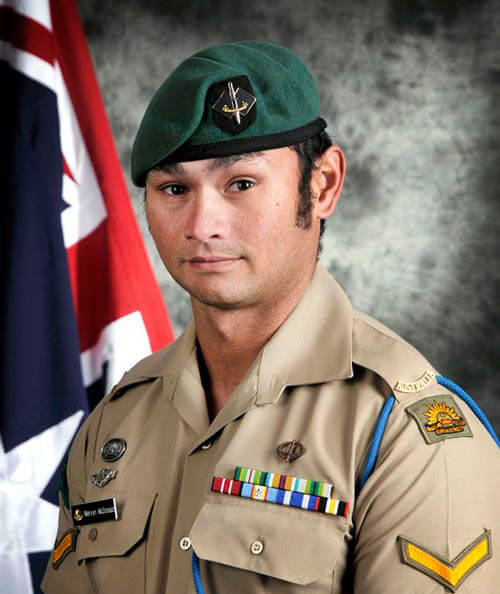
Lance Corporal Mervyn John McDonald
Lance Corporal Mervyn McDonald was serving with the Special Operations Task Group in Afghanistan when he was tragically killed in a helicopter crash on 30th August 2012 while on his sixth tour of Afghanistan.
Mervyn was born in Carnarvon, Western Australia, in 1982, and joined the Army on 31st May 1999 and was posted to the 1st Battalion, The Royal Australian Regiment (1 RAR).
On completion of his Selection and Training Course and Reinforcement Cycle, Mervyn was posted to the then 4th Battalion (Commando), The Royal Australian Regiment, now the 2nd Commando Regiment, in August 2008.
Mervyn was quick-witted and brought positive energy to both his unit comrades and all those who served with him. A dedicated, enthusiastic, and professional soldier, he was always willing to come forward with ideas and solutions.
Mervyn was a highly professional soldier, but his quiet nature and humility meant he always deflected credit back onto fellow members of his Company.
Mervyn is survived by his fiance, mother and stepfather, and three brothers.
Mervyn has received the following honours and awards:
- Australian Active Service Medal with Clasp East Timor and ICAT
- Afghanistan Campaign Medal
- Australian Service Medal with Clasp East Timor, Timor-Leste and CT/SR
- Australian Defence Medal
- United Nations Mission in Support of East Timor Medal
- Timor-Leste Solidarity Medal
- NATO non-article 5 Medal with Clasp ISAF and Multiple Tour Indicator (2)
- Commander 1st Division Commendation
- Infantry Combat Badge
- Returned from Active Service Badge
.
During Mervyn’s service in the Australian Army, he was deployed on the following operations:
- Operation Slipper (Afghanistan) July – August 2012
- Operation Norwich (Australia) November 2011
- Operation Slipper (Afghanistan) July – August 2011
- Operation Slipper (Afghanistan) April – May 2011
- Operation Slipper (Afghanistan) February – March 2011
- Operation Slipper (Afghanistan) March – June 2010
- Operation Slipper (Afghanistan) March – July 2009
- Operation Astute (Timor-Leste) March – June 2007
- Operation Astute (Timor-Leste) May – September 2006
- Operation Citadel (East Timor) May – October 2003
- Operation Tanager (East Timor) October 2000 – April 2001
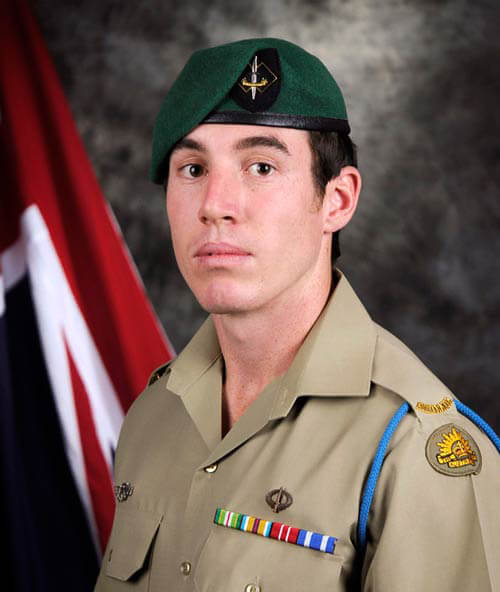
Private Nathanael John Aubrey Galagher
Private Nathanael Galagher was serving with the Special Operations Task Group in Afghanistan when he was tragically killed in a helicopter crash on 30th August 2012 while on his second tour of Afghanistan.
Nathanael was born in Wee Waa, New South Wales, in 1989 and joined the Army on 22nd October 2007 and was posted to the 1st Battalion, The Royal Australian Regiment (1 RAR).
On completion of his Selection and Training Course and Reinforcement Cycle, Nathanael was posted to the 2nd Commando Regiment in November 2011.
Nathanael always put 110% into everything he did. He had a can-do attitude, always wanting to get the job done and taking everything in his stride. He was an enthusiastic young soldier who was very well respected by his mates from the Regiment.
Nathanael is survived by his partner, parents and sister.
Nathanael has received the following honours and awards:
- Australian Active Service Medal with Clasp ICAT
- Afghanistan Campaign Medal
- Australian Defence Medal
- NATO non-article 5 Medal with Clasp ISAF and Multiple Tour Indicator (2)
- Infantry Combat Badge
- Returned from Active Service Badge
During Nathanael’s service in the Australian Army, he was deployed on the following operations:
- Operation Slipper (Afghanistan) July – August 2012
- Operation Slipper (Afghanistan) September 2009 – Feb 2010
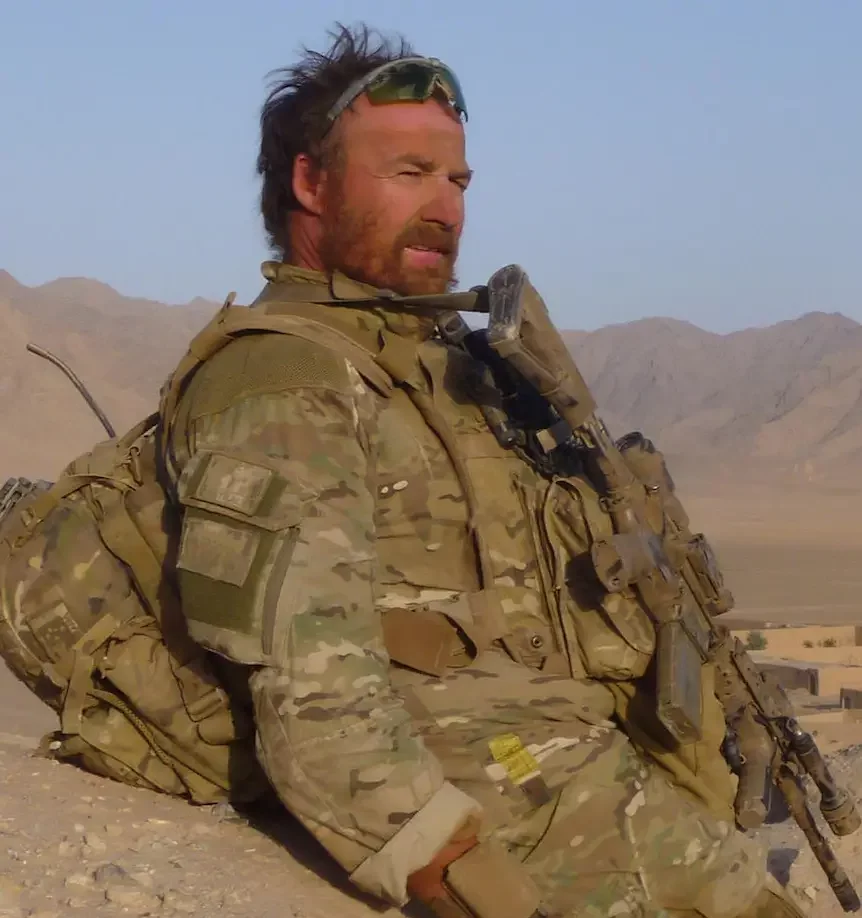
Sergeant Todd Matthew Langley
Sergeant Todd Langley was serving with the Special Operations Task Group when he was killed during deliberate operations against a Taliban Safe Haven on 4th July 2011 in Afghanistan.
Aged 35 at the time of his death, Todd was from the Sydney-based 2nd Commando Regiment.
Todd enlisted in the Australian Army on 18th April 1993 and, after initial training and a short period in the Army Reserve, was allocated to the 1st Battalion, The Royal Australian Regiment in 1994.
Todd later successfully completed Commando Selection and Training and was posted to the 2nd Commando Regiment (then the 4th Battalion, The Royal Australian Regiment) in 2004.
Todd was an extremely experienced Section Commander who saw operational service in East Timor and Afghanistan.
Todd was a dedicated, knowledgeable and passionate warrior who did not seek the limelight, preferring instead to let his actions speak for themselves, while his professionalism and leadership was infectious.
Todd left behind his beloved wife, three daughters, a son, loving parents, and a brother.
Todd was twice awarded the Commendation for Distinguished Service, along with the following honours:
- Australian Active Service Medal with Clasps East Timor and International Coalition Against Terrorism
- Afghanistan Campaign Medal
- Australian Service Medal with Clasp Counter-Terrorism/Special Recovery
- Defence Long Service Medal
- Australian Defence Medal
- United Nations Transitional Administration East Timor Medal with 2 device
- NATO Medal with International Security Assistance Force Clasp and 2 device
- Unit Citation for Gallantry
- Infantry Combat Badge
- Returned from Active Service Badge
- Todd was also posthumously awarded the United States Meritorious Service Medal
During Todd’s service in the Australian Army, he was deployed on the following operations:
- Operation Slipper (Afghanistan) 2011
- Operation Slipper (Afghanistan) 2009
- Protective Security Detachment Deployment To The Middle East Area Of Operations 2008
- Operation Slipper (Afghanistan) 2007
- Operation Slipper (Afghanistan) 2006
- Operation Citadel (East Timor) 2003
- Operation Tanager (East Timor) 2001
- Multiple domestic Counter-Terrorism operations for the provision of security to international events

Sapper Rowan Robinson
Sapper Rowan Robinson Australia’s 27th casualty of the war in Afghanistan, was killed in action on 6th June 2011 during an overnight operation to destroy a large cache of weapons discovered in northern Helmand province.
This was Rowan’s second deployment to Afghanistan, having deployed on Operation Slipper in 2007.
Aged 23 at the time of his death, Rowan was from the Incident Response Regiment — now renamed the Special Operations Engineer Regiment.
Rowan was born in Wahroonga, NSW, in 1987 and joined the Army in 2006. After his initial recruit training, he joined the 3rd Combat Engineer Regiment. Following four years of service, he was posted to the Incident Response Regiment at the start of 2010, where he completed his reinforcement cycle.
His colleagues described him as a superb young man who was fit, happy-go-lucky and a great team member. In addition, Rowan was a dedicated and professional soldier whose skill belied his youth.
Those who had the pleasure of meeting Rowan instantly warmed to him and his easy going nature, which made him popular with his peers and chain of command alike.
Rowan left behind his loving mother, father, sister and two brothers.
Rowan has received the following honours and awards:
- Australian Active Service Medal with Clasp International Coalition Against Terrorism
- Afghanistan Campaign Medal
- Australian Defence Medal
- NATO ISAF Medal
- Army Combat Badge
- Return from Active Service Badge
During Rowan’s service in the Australian Army, he was deployed on the following operations:
- Operation Slipper (Afghanistan) March 2011 – June 2011
- Operation Slipper (Afghanistan) September 2007 – April 2008
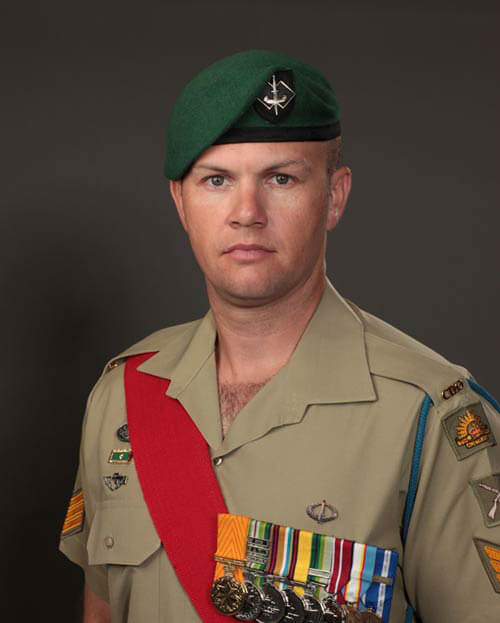
Sergeant Brett Mathew Wood, MG DSM
Sergeant Brett Wood was serving with the Special Operations Task Group when he was tragically killed by an explosive device in the conduct of operations within a Taliban Safe Haven in Afghanistan on 23 May 2011.
Aged 32 at the time of his death, Brett was from the Sydney-based 2nd Commando Regiment.
Brett enlisted in the Australian Army on the 13th February 1996 and, post initial training, was allocated to the 6th Battalion, The Royal Australian Regiment. He later successfully completed Commando training and was posted to 2nd Commando Regiment (then the 4th Battalion, The Royal Australian Regiment) in 1998.
Brett has seen operational service in Bougainville, East Timor, Iraq and Afghanistan.
He was an absolute professional emulated by many, given his service was of the highest order and he excelled in everything he did. Brett’s loss is sorely felt by his unit, mates and all who knew him.
Brett leaves behind his beloved wife, loving parents, sisters and brothers.
Brett has received the following honours and awards:
- Medal for Gallantry
- Australian Active Service Medal with Clasps East Timor, Iraq and International Coalition Against Terrorism
- Afghanistan Campaign Medal
- Iraq Campaign Medal
- Australian Service Medal with Clasps Bougainville and Counter-Terrorism/Special Recovery
- Australian Defence Medal
- United Nations Transitional Administration East Timor Medal
- NATO Medal with International Security Assistance Force Clasp and 2 Devices
- Unit Citation for Gallantry
- Infantry Combat Badge
- Returned from Active Service Badge
- Defence Long Service Medal
- Posthumously awarded the United States Meritorious Service Medal
- In the 2012 Australia Day Honours List, Brett was posthumously awarded the Distinguished Service Medal
During Brett’s service in the Australian Army, he was deployed on the following operations:
- Operation Slipper (Afghanistan) 2011
- Operation Slipper (Afghanistan) 2009
- Protective Security Detachment Deployments To The Middle East Area Of Operations 2008
- Operation Slipper (Afghanistan) 2006
- Operation Bastille Falconer (Iraq) 2003
- Operation Tanager (East Timor) 2001
- Operation Bel Isi (Bougainville) 2000
- Multiple domestic Counter-Terrorism operations for the provision of security to international events

Private Scott Travis Palmer
Private Scott Palmer was serving with the Special Operations Task Group when he tragically lost his life in a helicopter crash in Afghanistan on 21st June 2010.
Aged 27 at the time, Scott was from the Sydney-based 2nd Commando Regiment.
Scott enlisted in the Australian Army in 2001, and following his basic training, he joined 5th/7th Battalion, The Royal Australian Regiment (Mechanised) and saw service in East Timor and Iraq.
Scott successfully undertook Commando Selection and Training in 2006, joining the then 4th Battalion, The Royal Australian Regiment, in November 2006. Following this, Scott saw operational service in East Timor, Iraq and Afghanistan. His professionalism was of the highest order, and he excelled at everything he did.
Scott loved his job and working alongside his mates. He leaves behind his loving parents and brother.
Scott has received the following honours and awards:
- Australian Active Service Medal with Clasps East Timor, the Iraq and International Coalition Against Terrorism
- Afghanistan Campaign Medal
- Iraq Campaign Medal
- Australian Service Medal with Clasp Timor-Leste
- Australian Defence Medal
- UNMISET Medal
- NATO Medal with International Security Assistance Force Clasp
- Infantry Combat Badge
- Returned from Active Service Badge
During Scott’s service in the Australian Army, he was deployed on the following operations:
- Operation Slipper (Afghanistan) 2010
- Operation Slipper (Afghanistan) 2009
- Operation Slipper (Afghanistan) 2008
- Operation Astute (Timor-Leste) 2007
- Operation Catalyst (Iraq) 2005
- Operation Citadel (East Timor) 2003
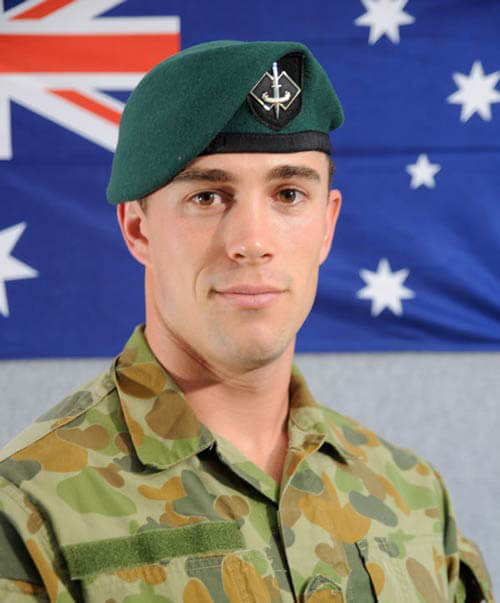
Private Benjamin Adam Chuck
Private Benjamin Chuck was serving with the Special Operations Task Group when he tragically lost his life in a helicopter crash in Afghanistan on 21st June 2010.
Aged 27 at the time, Benjamin was from the Sydney-based 2nd Commando Regiment.
Benjamin was born in Atherton, Queensland, in 1983 and joined the Army on 11th May 2004 as part of the Special Forces Direct Recruiting Scheme.
On completion of his Commando Selection and Training Course and Reinforcement Cycle, Benjamin was posted to the then 4th Battalion, The Royal Australian Regiment.
Benjamin was an outstanding Commando who was highly trained and excelled at all he attempted. He was the Patrol Medic within his sniper team and was suited to this role as his affectionate and caring nature drove his passion for helping his mates.
Benjamin leaves behind his loving parents, brother, sister, and beloved partner.
Benjamin has received the following honours and awards:
- Australian Active Service Medal with Clasp International Campaign Against Terrorism
- Afghanistan Campaign Medal
- Australian Defence Medal
- NATO Medal with International Security Assistance Clasp
- Infantry Combat Badge
- Return from Active Service Badge
During Benjamin’s service in the Australian Army, he was deployed on the following operations:
- Operation Slipper (Afghanistan) 2010
- Operation Slipper (Afghanistan) 2008
- Operation Slipper (Afghanistan) 2007
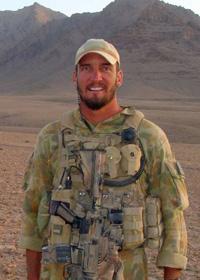
Private Timothy James Aplin
Private Timothy Aplin was serving with the Special Operations Task Group when he tragically lost his life in a helicopter crash in Afghanistan on 21st June 2010, during his second tour of Afghanistan.
Timothy enlisted in the Australian Army Reserves on 4th February 1992 and transferred to the regular army on 20th September 1995, reaching the rank of Sergeant.
He successfully completed the Commando Selection and Training Course in 2008 and was posted to the then 4th Battalion Royal Australian Regiment in January 2009 after completing the Commando Reinforcement Cycle. To achieve this goal, he willingly took the required reduction in rank from Sergeant.
Timothy was an outstanding and dedicated Commando who was highly respected. He leaves behind his beloved wife, two children, two step-children and a loving mother.
Timothy has received the following honours and awards:
- Australian Active Service Medal with East Timor, Iraq and International Coalition Against Terrorism Clasps
- Afghanistan Campaign Medal
- Iraq Campaign Medal
- Defence Long Service Medal
- Australian Defence Medal
- United Nations Medal with Transitional Authority East Timor Ribbon
- NATO Medal with International Security Assistance Force Clasp
- Infantry Combat Badge
- Returned from Active Service Badge
During Timothy’s service in the Australian Army, he was deployed on the following operations:
- Operation Slipper (Afghanistan) 2010
- Operation Slipper (Afghanistan) 2009
- Operation Falconer (Iraq) 2003
- Operation Tanager (East Timor) 2000
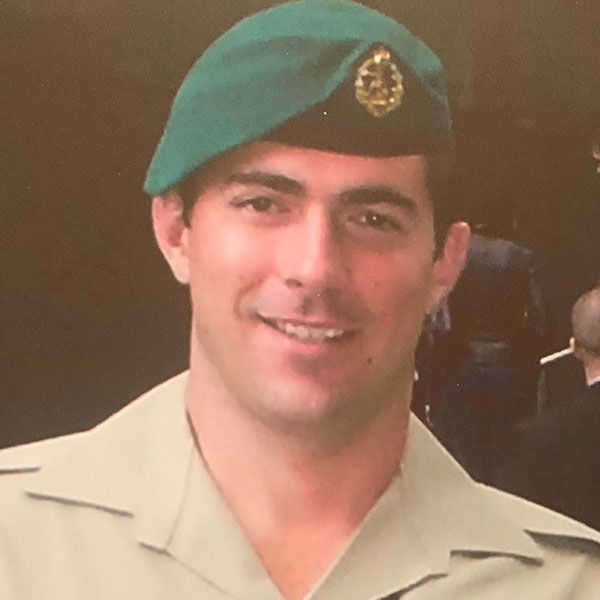
Lance Corporal Mason Kerrin Edwards
30-year-old Lance Corporal Mason Edwards was serving with the Sydney-based 2nd Commando Regiment when he was killed in an operational training accident at Cultana Range, South Australia, on 20th October 2009.
Mason enlisted in the Australian Army in January 2004 as one of the first members of the Special Forces Direct Recruiting Scheme. After recruitment and initial employment training, he successfully completed the Commando Selection and Training Course. Following this, he was posted to the then 4th Battalion, The Royal Australian Regiment.
Throughout his short but extremely busy career, Mason proved himself to be a consummate professional. During his tours to Afghanistan, he demonstrated considerable mental toughness and physical endurance whilst deployed on combat operations.
Mason leaves behind his loving parents, two sisters, brother, and beloved partner.
Mason has received the following honours and awards:
- Australian Active Service Medal with Clasp International Coalition Against Terrorism
- Afghanistan Campaign Medal
- Australian Service Medal with Clasp Timor-Leste
- Australian Defence Medal, Timor-Leste Solidarity Medal
- NATO Medal with International Security Assistance Force Clasp
- Infantry Combat Badge
- Returned from Active Service Badge
During Mason’s service in the Australian Army, he was deployed on the following Operations:
- Operation Slipper (Afghanistan) 2008
- Operation Slipper (Afghanistan) 2007
- Operation Astute (Timor-Leste) 2006

Sergeant Brett Till
Sergeant Brett Till was serving with the Special Operations Task Group in southern Afghanistan when he was killed while disarming a Taliban Improvised Explosive Device on 19th March 2009.
Aged 31 at the time, Brett was from the Sydney-based Incident Response Regiment (IRR) — now renamed the Special Operations Engineer Regiment.
Brett was born in New South Wales, Australia and enlisted in the Australian Army on 17th July 2001. After completing training, he was allocated to the Royal Australian Engineers and completed his Combat Engineer Initial Employment Training on 6th March 2002.
Brett’s first posting was to the 1st Combat Engineer Regiment, where he fulfilled a number of junior sapper roles and qualified in a range of mechanised combat engineering roles such as crewman driver, bridging and destruction of malfunctioning explosive ordnance.
In 2002, Brett was deployed on Operation Relex II, an operation focused on border protection to the north of Australia. On 20th June 2004, he was promoted to LCPL and, in January 2005, was posted to the Incident Response Regiment as a combat engineer within the Chemical, Biological and Radiological Response Squadron.
In September 2005, Brett was promoted to CPL and in late 2005, he completed the Explosive Ordnance Reconnaissance course.
In 2007, Brett was posted to the School of Military Engineering as an instructor. He was given the opportunity to complete the Explosive Ordnance Disposal Technician course, which was one of the highlights of his military career.
In September 2008, Brett was temporarily promoted to SGT and was posted back to the Incident Response Regiment to conduct force preparation for Operation Slipper.
Brett was employed within 5 Troop, IRR as a Mobility and Survivability Team Commander and EOD Technician and spent September 2008 to February 2009 preparing with his troop for their deployment to Afghanistan. He was deployed to Afghanistan on 24 February 2009, serving with the Special Operations Task Group 9.
Brett leaves behind his beloved wife and three children.
For his service, Brett has received the following honours and awards:
- Australian Active Service Medal with International Coalition against Terror Clasp
- Afghanistan Campaign Medal
- Australian Defence Medal,
- NATO Medal with Clasp International Security Assistance Force
- Army Combat Badge
- Return from Active Service Badge
During Brett’s service in the Australian Army, he was deployed on the following Operations:
- Operation Slipper (Afghanistan) 2009
- Operation Relex II (Border Protection) 2002
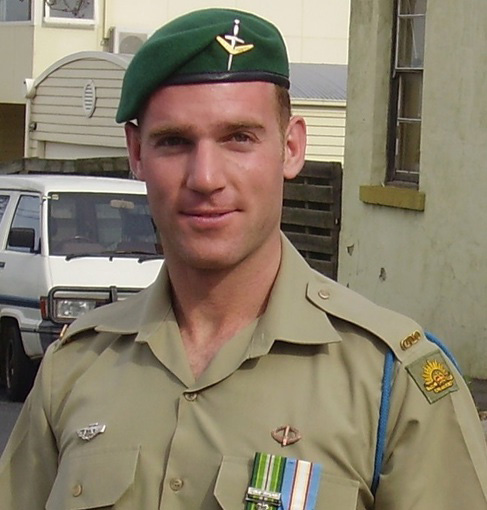
Private Gregory Michael Sher
Private Gregory Sher was serving with Special Operations Task Group in Oruzgan Province in southern Afghanistan when he was killed in a rocket attack on 4th January 2009.
Aged 32 at the time of his death, Gregory was from the Melbourne-based sub-unit of 1st Commando Regiment.
Gregory was born in South Africa in 1978 and moved to Australia with his family in 1986. He enlisted in the Australian Army in 1998 as a Reserve rifleman with the 5th/6th Battalion, the Royal Victorian Regiment. He was deployed to East Timor in 2002 attached to 5th/7th Battalion, The Royal Australian Regiment (Mechanised).
In 2004, Gregory completed the Commando Selection Course and joined 1st Commando Regiment, going on to complete the suite of Special Forces courses required to become a qualified Commando.
In late 2008, Gregory was deployed to Afghanistan with the Special Operations Task Group.
Gregory leaves behind his beloved partner, loving parents and two brothers.
For his service, Gregory has received the following honours and awards:
- Australian Active Service Medal with Clasps East Timor and International Coalition against Terror
- Afghanistan Campaign Medal
- Australian Defence Medal
- United Nations Medal with Transitional Authority East Timor Ribbon
- NATO Medal with Clasp International Security Assistance Force
- Infantry Combat Badge
- Returned from Active Service Badge
During Gregory’s service in the Australian Army, he was deployed on the following operations:
- Operation Slipper (Afghanistan) 2009
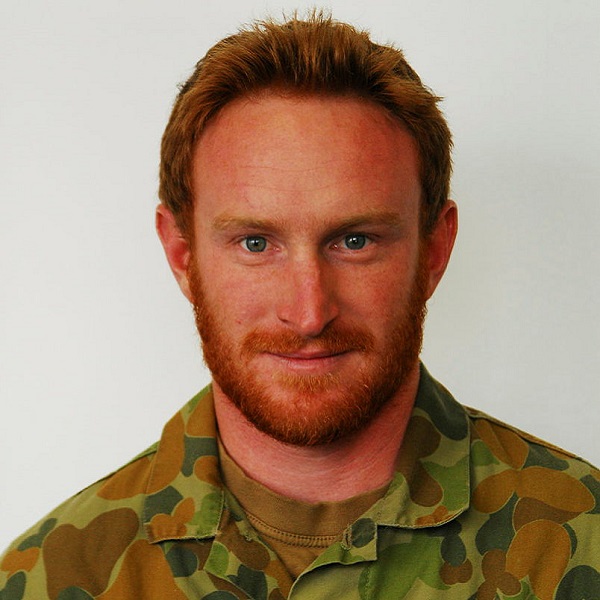
Lieutenant Michael Kenneth Housdan Fussell
Lieutenant Michael Fussell was serving with the Special Operations Task Group when he was killed by an Improvised Explosive Device while conducting a dismounted patrol in Oruzgan Province, Afghanistan, on 27th November 2008.
Aged 25 at the time of his death, Michael was from the Sydney-based 4th Battalion, The Royal Australian Regiment (Commando)
Michael was born on 17th November 1983 at Coffs Harbour, New South Wales, enlisted in the Australian Army in January 2002 and was appointed as an Officer Cadet at the Australian Defence Force Academy.
He completed a Bachelor of Arts and was a keen sportsman with a strong interest in rugby.
Michael attended Royal Military College, Duntroon, in 2005, commissioning in December 2005 into The Royal Regiment of Australian Artillery. On graduation, he was posted to A Field Battery, 4th Field Regiment, where he fulfilled a number of junior officer roles.
During his time at A Field Battery, he qualified as a paratrooper and was also deployed to East Timor on Operation Astute in 2006 and 2007.
Michael was posted to 4 RAR (CDO) in January 2008 as a Joint Offensive Support Team Commander. He was a Platoon Commander for the Advanced Infantry Course at Singleton and completed the Joint Terminal Attack Controllers course.
Michael leaves behind two loving parents, his younger brother and two younger foster sisters. His brother is a Lieutenant with 1st Field Regiment, Royal Regiment of Australian Artillery in Brisbane.
Michael’s military decorations include the following:
- Australian Active Service Medal with Clasp International Campaign Against Terrorism
- Afghanistan Campaign Medal
- Australian Service Medal Clasp Timor-Leste
- Australian Defence Medal
- NATO Medal with Clasp International Security Assistance Force
- Army Combat Badge
- Return from Active Service Badge
During Michael’s service in the Australian Army, he was deployed on the following Operations:
- Operation Slipper (Afghanistan) 2008
- Operation Astute (Timor-Leste) 2007
- Operation Astute (Timor-Leste) 2006
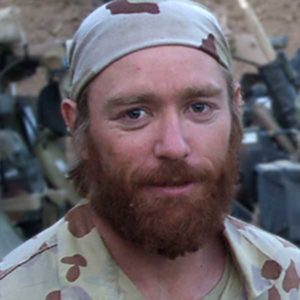
Lance Corporal Jason Paul Marks
Lance Corporal Jason Marks was serving with the Special Operations Task Group when he was killed during deliberate operations against a Taliban Safe Haven on 27th April 2008 in Afghanistan.
Aged 27 at the time of his death, Jason was from the Sydney-based 4th Royal Australian Regiment (Commando).
Jason enlisted in the Australian Regular Army on 2nd March 1999. On completion of his initial training at Kapooka in 1999, he was allocated to the Royal Regiment of the Australian Artillery and was posted to the 4th Field Regiment in Townsville.
During his service with Artillery, Jason deployed to East Timor with INTERFET in 1999 and gained the rank of Lance Bombardier in 2001. In April 2003, he transferred to the Royal Australian Army Medical Corps as an assistant medic until he volunteered for Commando Selection in 2005.
Jason was first deployed to Afghanistan in 2006 with the Special Operations Task Group. He was deployed again to Timor-Leste as part of Operation Astute with the Special Operations Task Group in 2007 and again to Afghanistan in 2008.
During the first three months of his deployment, he was an active participant in a number of significant engagements with the Taliban. He reinforced his reputation as a tough Commando and a strong and effective junior leader.
Jason leaves behind his beloved wife and two children, loving parents and brother.
For his service to his country, Jason has received the following honours and awards:
- Australian Active Service Medal with Clasps for East Timor and the International Coalition Against Terrorism
- INTERFET Campaign Medal
- Afghanistan Campaign Medal
- Australian Service Medal with Timor-Leste Clasp
- Australian Defence Medal
- NATO Medal with International Security Assistance Force Clasp
- Unit Citation for Gallantry
- Return from Active Service Badge
- Infantry Combat Badge
During Jason’s service in the Australian Army, he was deployed on the following operations:
- Operation Slipper (Afghanistan) 2008
- Operation Astute (Timor-Leste) 2007
- Operation Slipper (Afghanistan) 2006
- Operation Warden (East Timor) 2000
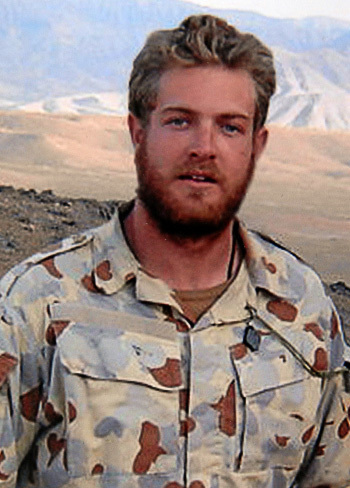
Private Luke James Worsley
Private Luke Worsley was serving with Special Operations Task Group in Oruzgan Province in southern Afghanistan when he was killed in a deliberate operation against Taliban Leadership on 23rd November 2007.
Aged 26 at the time of his death, Luke was from the Sydney-based 4th Battalion, The Royal Australian Regiment (Commando).
Luke enlisted in the Australian Army on 23rd October 2001. After completing his recruit training, he was allocated to the Royal Australian Infantry Corps. At the completion of his Initial Employment Training, Luke was posted to the 1st Battalion, The Royal Australian Regiment (1 RAR).
During his service with 1 RAR, Luke was deployed to East Timor as part of Operation Citadel, providing security to the people of East Timor. After two years of service with 1 RAR, Luke applied for service with the 4th Battalion, The Royal Australian Regiment (Commando).
Luke was deployed on his first tour to Afghanistan in 2006 and again in 2007.
Luke was an extremely valued and respected member of his company group. He was physically fit, gifted, skilful, tough, and selfless. He was a man who could be counted upon.
Luke leaves behind his loving parents, five siblings and beloved partner.
For his service in East Timor and Afghanistan, Luke has received the following honours and awards:
- Australian Active Service Medal with Clasp East Timor and the International Coalition Against Terrorism Clasp
- Afghanistan Campaign Medal
- Australian Defence Medal
- United Nations Medal with the United Nations Transitional Authority East Timor Ribbon
- Return from Active Service Badge
- Infantry Combat Badge
- Unit Citation for Gallantry for his service with the Special Operations Task Group in 2006
During Luke’s service in the Australian Army, he was deployed on the following Operations:
- Operation Slipper (Afghanistan) 2007
- Operation Slipper (Afghanistan) 2006
- Operation Citadel (East Timor) 2003
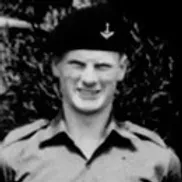
Private Sean Ryan
Private Sean Ryan from 1 Commando Company died on 25th September 1983 after a speed march at Holsworthy NSW.
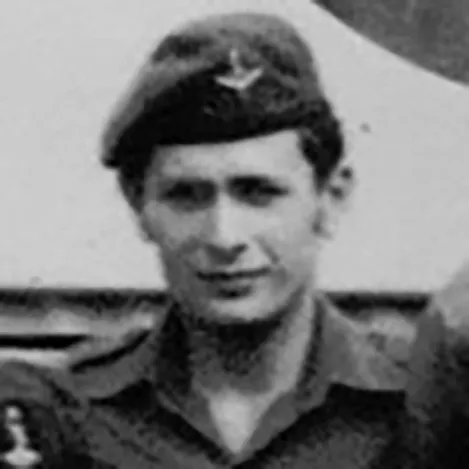
Lance Corporal Stephan Kennedy
LCPL Kennedy died on 14th Feb 1981.
Lance Corporal Stephan Kennedy from 1 Commando Company died on 14th February 1981 in a car accident in Gosford, New South Wales, when returning from his Basic Parachute Course.
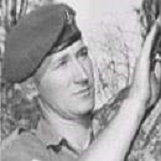
Sergeant Dan Lorkin
Sergeant Dan Lorkin died on 22nd September 1966 due to a roping accident at the Royal Melbourne Showgrounds when he descended a rope between a light tower and an army vehicle.
Dan grew up in Daylesford and attended St Patrick’s College, Ballarat, where he was a talented footballer and rowed with the St Patrick’s College team. He later moved to Melbourne to work and joined 2 Commando Company in late 1959.
Dan was an excellent all-around athlete who often demonstrated standing forward somersaults during PT and unarmed combat training.
One of the early unit members to do the demanding SAS Recondo course, Dan was an intelligent and skilful soldier who possessed the usual diggers’ initiative and a quiet ability to get into mischief.
In Major Noel Williams’ time (1965-1968), as in many previous years, 2 Commando Company demonstrated a wide range of skills before large crowds at the Melbourne Show. Along with unarmed combat displays, speed marching, para ground demonstrations and infantry tactics, the men did aerial rope work from the light towers.
On this occasion, there was a tragic accident. Dan had begun his slide down the rope, which ran from the top of the tower and was anchored to an army vehicle in the arena. When Dan was halfway down, and Keith Hughes was about to step off the tower platform, the rope snapped, throwing Dan to the ground.
Fifty-plus years after his life was tragically cut short, those who served with him throughout the ‘60s remember Dan Lorkin.

Private Phillip Stewart
Private Stewart from 1 Commando Company died on 30th March 1966 when a gun pit collapsed at the Gan Gan Training area in New South Wales.

Recruit Anthony Matulis
Recruit Matulis from 1 Commando Company died on 13th February 1963 after a speed march at Georges Heights, New South Wales.

Private Edward Meyer
On the evening of 17 February 1960, 74 Commandos from 2 Commando Company set off in army watercraft on a training exercise from Point Lonsdale to Point Nepean in Victoria.
The exercise was to simulate a raid and involved them crossing the infamous rip at the entrance to Port Phillip Bay. However, the weather changed without warning, and the watercraft were swept out to sea through the Port Phillip heads, encountering massive seas and some capsised.
George “Taffy” Drakopoulos and Eddie Meyer drowned before they could be rescued.
Roger Wood selflessly helped his fellow Commandos up a rope ladder on a larger rescue vessel to safety from a Zodiac inflatable, only then to be flung into the sea and lost somewhere beyond the rip.
The three victims were all from Melbourne and aged around 20.
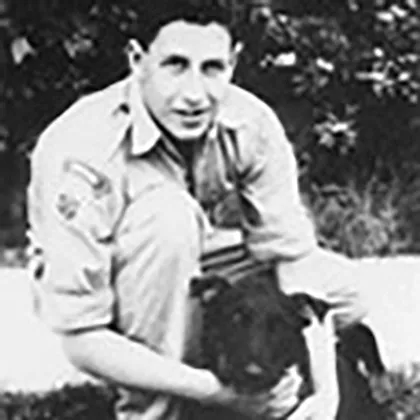
Private Roger Wood
Private Roger Wood February 17, 1960
On the evening of 17 February 1960, 74 Commandos from 2 Commando Company set off in army watercraft on a training exercise from Point Lonsdale to Point Nepean in Victoria.
The exercise was to simulate a raid and involved them crossing the infamous rip at the entrance to Port Phillip Bay. However, the weather changed without warning, and the watercraft were swept out to sea through the Port Phillip heads, encountering massive seas and some capsised.
George “Taffy” Drakopoulos and Eddie Meyer drowned before they could be rescued.
Roger Wood selflessly helped his fellow Commandos up a rope ladder on a larger rescue vessel to safety from a Zodiac inflatable, only then to be flung into the sea and lost somewhere beyond the rip.
The three victims were all from Melbourne and aged around 20.
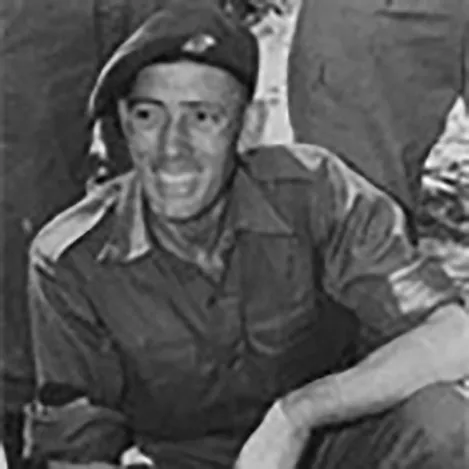
Warrant Officer Class Two George Drakopoulos
On the evening of 17 February 1960, 74 Commandos from 2 Commando Company set off in army watercraft on a training exercise from Point Lonsdale to Point Nepean in Victoria.
The exercise was to simulate a raid and involved them crossing the infamous rip at the entrance to Port Phillip Bay. However, the weather changed without warning, and the watercraft were swept out to sea through the Port Phillip heads, encountering massive seas and some capsised.
George “Taffy” Drakopoulos and Eddie Meyer drowned before they could be rescued.
Roger Wood selflessly helped his fellow Commandos up a rope ladder on a larger rescue vessel to safety from a Zodiac inflatable, only then to be flung into the sea and lost somewhere beyond the rip.
The three victims were all from Melbourne and aged around 20.
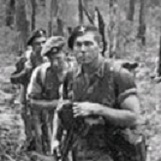
Lance Corporal Peter James Herd
Lance Corporal Peter Herd drowned while doing an “observe swim” to RVNS Cerberus at Half Moon Bay in Melbourne in October 1958.
Corporal Herd was a member of a party of ten who walked underwater to the sunken vessel about 350 metres offshore. On the return journey, Peter and another frogman got into difficulties.
Warrant Officer Peter Askew rescued the other soldier and then pulled Corporal Herd from the water.
Corporal Herd was rushed to hospital when he failed to respond to resuscitation.
The previous year Herd was the inaugural recipient of the Major John Anderson Shield awarded to the member of 2 CDO Coy who had shown the greatest all-around progress and dedication to the unit.
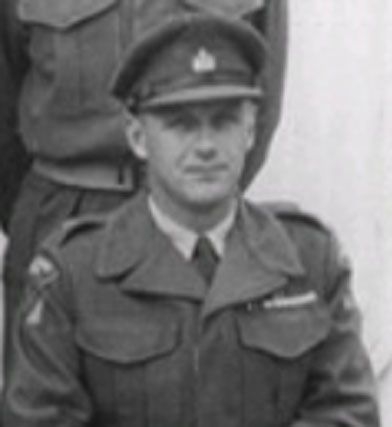
Major John Anderson
Major John Anderson died as a result of drowning during a river crossing in the United Kingdom on 14th December 1955.
OC designate Major John Anderson was sent in October 1955 to England for Commando training before taking up his posting as Officer Commanding 2 Commando Company, succeeding Major Peter Seddon.
John graduated from Duntroon and served in the Third New Guinea Infantry Battalion and then in Japan with the Occupation Forces. Before leaving for the United Kingdom, he also served with the First Royal Australian Regiment in Korea from 1951 to 1953.
In December 1955, undertaking a scrambling course on almost the last day of the basic Commando course, John overtook 1 CDO Coy OC Major Mac Grant (who was carrying an injured ankle) on the path to a river crossing.
Grant reached the river in time to see Anderson swept away from the single rope and carried out of sight in the cold, fast-flowing river.
Sadly leaving a wife, and two children aged one and four, Major Anderson was buried with full military honours at Drysdale near Geelong, in the town where he was born 32 years earlier.